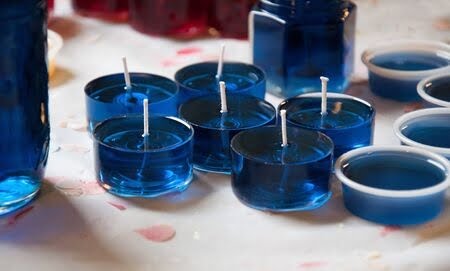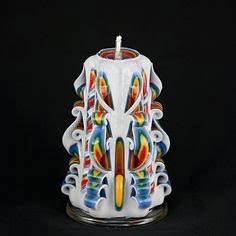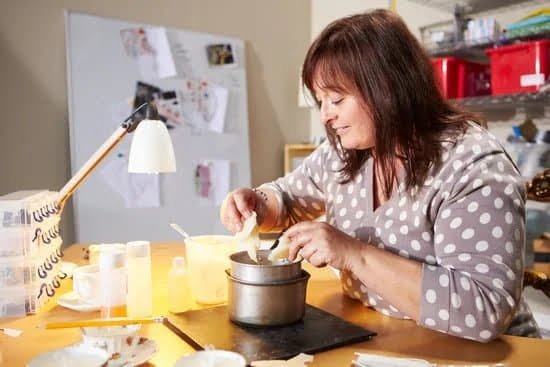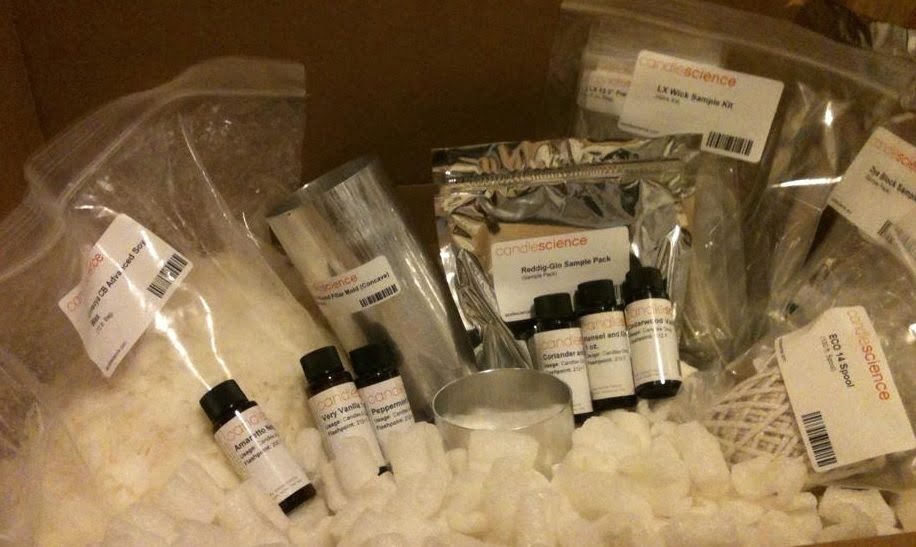Introduction
In the 19th century, candle making was an essential way of providing light in the darkness. With very few alternatives for illumination, candles were a much-needed and widely used item for those living in the 19th century. Before the invention of the light bulb and other modern inventions, candlelight was one of the only sources of nighttime visibility.
The practice of candle making dates back to Ancient Greece with experimented rendering out animal fat for creating tallow candles. Other primitive materials used for making lights included things like beeswax and pressed nut oils. As people became more aware of their environment, they also began using ingredients like spermaceti from whales and cod oil that did not leave as heavy fume odors or smoke when lit up.
This trend continued during the 19th century as candle makers perfected their craftsmanship with molds and different types of wicks to increase burn times and release pleasant scents while burning without soot or smoke residue. This allowed people to decorate their homes and make activities such as reading a book possible during night time. It also supplied significant resources to any festivities or events such as weddings where candles were often used as centerpieces or gender reveals due to their usage being romanticized by society at large. Because of this notoriety, business owners found it profitable to expand on their candle production process creating new approaches from dipping multiple wicks at once or even filling metal molds faster than ever before.
A Look Back
The art of candle making is believed to have been around since pre-historic times; however, 19th century candle making saw a major revolution in the craft due to advancements in technology and the abundance of materials. It was during this time that candles became widely accessible to the masses. This newfound accessibility propelled 18th and 19th century candle makers to innovate new designs, fragrances, and burning capabilities. The oldest form of 19th century candle making was through dipped or molded candles which were made by pouring molten wax into molds (sometimes carved from blocks of wood) or shaping it around wicks one layer at a time until the desired size and shape were achieved. Eventually more advanced methods utilizing molds were invented, such as funnel molding which allowed for larger and thicker candles. To ensure longer burning times and more pleasant scents many types of material were added such as stearin and tallow. These early candle makers also drew inspiration from nature for fragrance ideas such as floral scents like rose, lavender, lily etc..
Additionally, candle makers developed different types of wicks that made their candles burn slower and more evenly without dripping. As the demand for candles grew so too did its availability in retail stores across Europe and America in addition to specialty retailers specializing in aromatically infused beeswax tapers tailored to entire households or churches with small votive options meant for individual use. Specialty oils such as jasmine or sandalwood would be combined with these long-burning beeswax tapes to provide various levels of ambient illumination combined with differing levels of aromatherapy relaxation benefits throughout the evening hours within homes & places or worship. Today most forms of 19th century style craftsmanship have been replaced with modern engines requiring electricity as well as mass-production techniques that produce vast quantities but lack on personal touch famously attributed ornate 1800s decoration replicating their legacy within the modern world today
The Tools and Materials
Candle making during the 19th century was a labor-intensive and time consuming process. It required large amounts of animal fat, such as tallow or beeswax, as well as cotton or linen wicks. The fats were heated, usually in a double boiler, until they became liquid enough to be poured into molds.
Once the fats had melted and reached the desired temperature, they were combined with pigments or aromatic oils if colored candles or scented ones were desired. The molds could be made out of clay, wood, metal, or glass and shaped in many different ways. To ensure all the air was removed from the mixture before it hardened again and to increase uniformity of shape and size, it was often necessary for a worker to press down hard on top of each filled mold with a tamper.
After leaving to cool for several hours, the candles were popped out of their containers and readied for sale. If multiple shapes were cast from one batch of fat, then special tools such as candle snipping shears were used to clip them apart according to size preference. Finally, some artisans would go through the tedious task of using needles to handpaint designs onto their finished product. This elegant touch added even further beauty and worth to the 19th century candle maker’s craftsmanship.
Regional Variations
In the 19th century, candle making was a craft practiced around the world. Each region had its own unique approach to creating candles that reflected their values, materials, and cultural practices.
For instance, in China, tallow candles were produced with animal fat that dictated a softer wax. It was then rolled into intricate cylindrical shapes decorated with beautiful designs just before being dipped in hot wax or salt water for increased stability and flame control. In Japan, beeswax candles known as rōsoku were made with greater flexibility for creative styles such as ribbons, flowers and more complex patterns.
Other countries like Russia used spontaneous spikes in paraffin wax from their petroleum industry to manufacture neutral white candles with cotton wicks while African slaves developed signature techniques of pouring hot wax into hollowed out gourds or millet husks stored deep in wet bowls which stiffened them as they cooled.
Meanwhile, Europe adopted broader varieties of candles like beeswax tapers, bayberry tapers and spermaceti candles mainly crafted due to their longevity and excellent heat conduction properties; resulting in a stronger odorless burn compared to their counterparts found elsewhere in the world.
Business of 19th Century Candle Making
In the 19th century, candle making was an important business. Candles provided light in homes and businesses when electricity was not yet widely available. During this period, candles were made from tallow, which is a rendered form of beef fat or mutton fat. Throughout the 19th century there were both large-scale and small-scale candle makers. Large-scale operations generally utilized factories to manufacture their products, while small-scale makers worked out of their own workshops or even their homes depending on how ambitious they were.
Large-scale candle makers typically purchased their raw materials in bulk and employed dozens of workers in the production process. Machines like dipping shafts, wick cutters and molds created very detailed designs with special scents and colors added in order to make them more desirable to customers. At this scale, labor costs could be more easily managed since it was broken down into assembly line tasks that allowed for significant cost savings through economies of scale.
Small-scale candle makers performed all of their work by hand or in some cases with the help of another family member or helper. They usually started with a simple tallow recipe that was used for all sorts of candles including long tapers, dipped sticks, snuffers (used for cutting off wicks), sailing ships’ lanterns and Rushlights (a kind of rush dipped in tallow). Dyes and perfumes were added by small makers to lure customers away from larger enterprises as well as create a sense of exclusivity that could not be found elsewhere at the time . Small-scale processes took a bit longer than those using automated machines but still provided adequate quality which made them popular with buyers around the world.
Revolutionary Inventions
The 19th century saw a number of remarkable inventions that revolutionized the way candles were made. The candlewick spinning machine (1826) was invented by French engineer Auguste Poussielgue, which streamlined the process of manually spinning waxed hemp threads into wicks used in manufacturing candles. In 1847, Joseph Morgan invented a machine that automated the dipping process which was previously done by hand, while Englishman Simon Almond designed a machine in 1860 to produce larger opportunities for candle makers to mass-produce candles.
The 1800s also saw the invention of new ways to formulate candles for different purposes and uses. Paraffin wax was patented in 1867 and it allowed for longer burning times and improved flame quality compared to vegetable waxes like bayberry or beeswax. Colored paraffin was then developed in 1875, followed shortly after by stearic acid, which increased burn time as well as improving flame quality. Candles even became safer during this time period thanks to Aerolite, an invention developed by Sir Cyril Hans Gepp that contained magnesium filings inside hollow wicks and produced antherizing flames with a lower heat output.
Women and the Art of Candle Making
Throughout the 19th century, candle making was a vital industry which provided an important source of light to the world. During this time, women were at the center of this craft and played a crucial role in its development. Although women dominated production processes in many industries prior to industrialization, candle making offered one of the most sustained opportunities for female entrepreneurs and artisans.
Women generally led all steps of the arduous process from collecting supplies and preparing ingredients, to designing molds and finally pouring wax into them. Time consuming tasks such as straining tallow or bee’s wax had to be done carefully and precisely. Tallow and wicks had to be purchased from tradition providers with large amounts of capital and these stalls were owned by wealthier men who profited profitably off their sales. Candle makers would also need bottles and containers that they would fill with colored scented candles. In addition, some even took part in unique designs such as box-molded candles decorated with paintings or gilding which added a level of sophistication that made them suitable for wealthy Victorian households. Candle makers would have to constantly inspect their creations in search of any flaws or imperfections so that no defective product was ever sold.
At fairs and markets, it was common practice for women candle makers to promote their products while competing against other artisans who used more technologically advanced factories than those used by women craftsman. Despite these pressures, many female artists managed to stay prosperous because of their unwavering commitment to quality craftsmanship which enabled them to not only keep up with the times but flourish during a period where males occupied most positions in industry leadership roles. In essence, these resilient female artisans were instrumental in keeping candle making alive during this pivotal time of transition between traditional crafting techniques and industrial practices; proving that talented women could survive just fine without leaning on men for success – something that is still true today!
The Technological Revolution
Candle making has been an essential form of light, heat and comfort since ancient times. As far back as ancient Egypt, historians record that wax, fat or tallow were melted and fashioned into primitive torches and lamps. In the 19th century, candles had immense importance in providing light for activities after sundown. Using a hand-operated contraption called a dipping machine, this was a tedious process where the wick passed through multiple vats of molten wax before gaining the required thickness for efficiency.
However, technology changed all this during the dawn of the 19th century. The invention of candle molds revolutionized the industry by allowing for quicker production and better reproducibility in shapes sizes as well as superior quality. This new method used what is known as ‘pressed candle’ which involves feeding pre-cut wicks into metal molds, while hot liquefied wax is poured in by hand and compacted by mechanical presses to form cylinders with knobs at both ends. With this invention, many small-scale companies began mass producing different types and qualities of candles on an industrial level leading to enhanced commercialization and higher profits. Furthermore, the use of stearin (an animal-based hardening agent) improved household candles’ burning time; another step forward in improved efficiency thanks to technology!
Between 1800 -1850 candle availability dramatically increased due to technology allowing it to infiltrate most households in Europe and later America. This made simple tasks such as homelighting available even to those living at lower economic levels. Moreover more advanced techniques such as coating (used for waterproofing), enabling double moulds for two color candles were invented further pushing innovation boundaries in modernizing traditional processes .
19th Century Candles
In the 19th century, candles were an essential source of light as well as a decorative element that could be found in nearly every home. There were many different types of candles available to purchase, including tapers, snuffers, and bayberry candles. Candles could also be purchased in various colors and fragrances to add a personal touch to one’s space. Popular colors included pale pastels and bold jewel tones, while typical scents like bayberry and cinnamon combined with the desired hue for a unique look. Beeswax was popular in making 19th century candles since its natural golden color suited many styles as it had an inviting warm glow. People used tallow or whale blubber such as spermaceti to increase the length of time a candle would burn and also allowed for experimentation with new colors like brown, purple and green. Today’s unscented candles tend to produce less smoke but in the 19th century, people enjoyed the smell of burning wax or sugared aromas released when mottled dipped candles were lit within their homes.
The Legacy of Candle Making in the 19th Century
Candle making was an important part of everyday life during the 19th century. In a time before electricity, candles provided a main source of light. This meant that candle making was not only an art form, but it was an essential source of illumination for many people all over the world.
In rural areas, candle making frequently used natural methods such as bayberry wax from shrubs, which were also known for their medicinal properties. Beeswax and spermaceti oil were other sources for candle wax and these were widely available in some places across Europe and North America. Manufacturing of candles in factories with mass-produced materials became more common towards the end of the 19th century which allowed many households to afford the materials required to make their own candles at home. Of course, this industrialization greatly eased the process by decreasing production costs and increasing affordability on a much larger scale.
It is important to remember that despite the industrialization efforts, hand-made candles remained important economically in some cultures—especially during religious ceremonies where ornately decorated religious candles often held centre stage. To this day, candelabras remain popular ornaments owing to this heritage spanning centuries of candle craftsmanship that started right here in the 19th century. Innovations during this era such as mould manufacture used to produce multiple candles compartments saw candle burning become more aesthetic than ever before yet while also cost efficient compared to manual creation techniques of earlier times.
Wrapping Up
In the 19th Century, candle making was an intricate yet fascinating art form. Both women and men worked to craft those hard wax candles that lit up the dark night sky. The materials required for candlemaking included wax, wicks, and molds or pans in which to pour the melted wax into. Depending on the type of wax used, additional ingredients might be necessary – from sulfuric acids to tallow or bayberries to beeswax. It also involved knowledge of burning techniques and temperatures varying depending upon their use in either a home or public space setting. It was laborious work but its importance in providing light to homes and places of worship could not go unnoticed. Candle making during this period allowed those who created them a source of income and provided citizens with various options when it came to ways of lighting up a room efficiently. Ultimately, 19th-century candle making was an important part of life throughout this era – providing much needed light virtually anywhere and everywhere at any time.

Welcome to my candle making blog! In this blog, I will be sharing my tips and tricks for making candles. I will also be sharing some of my favorite recipes.





